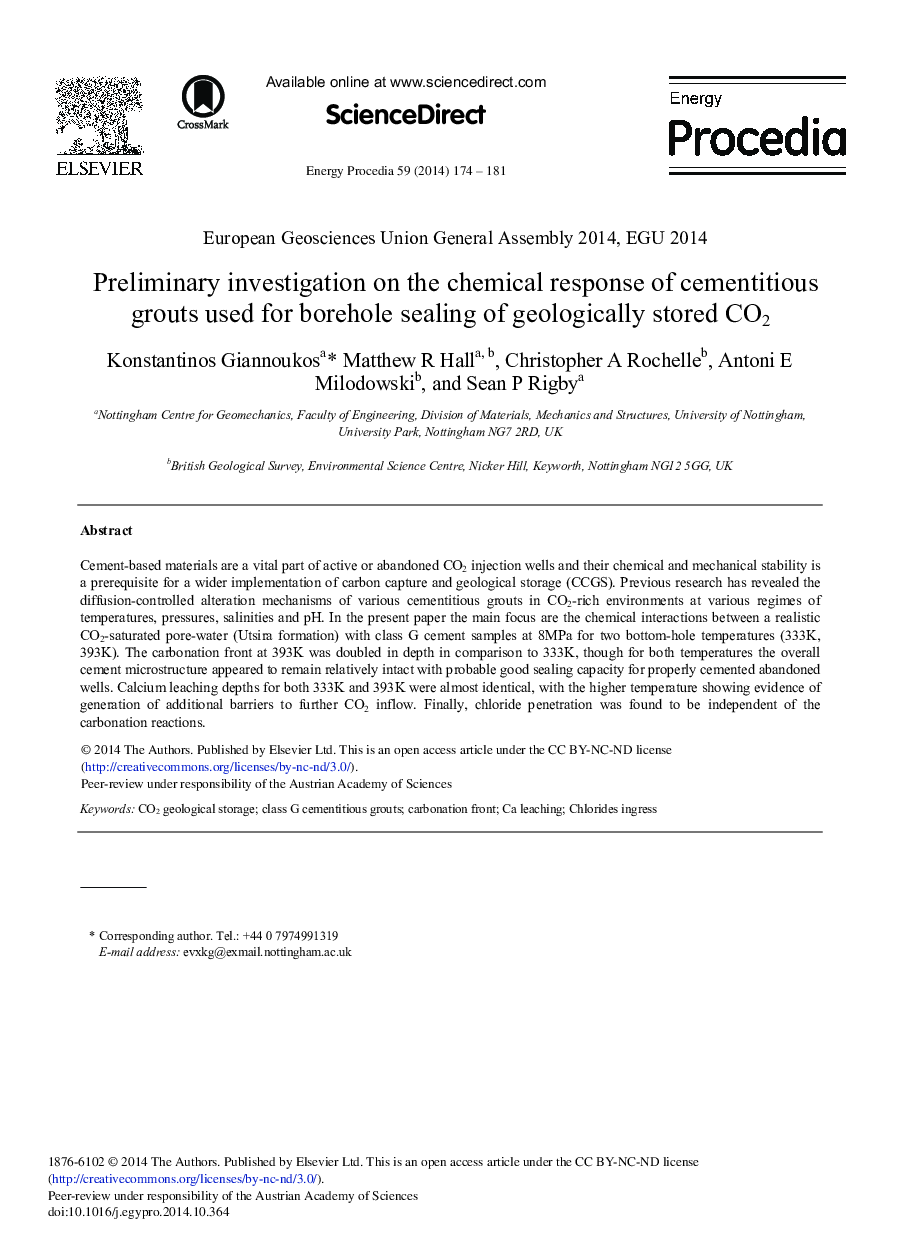| Article ID | Journal | Published Year | Pages | File Type |
|---|---|---|---|---|
| 1511028 | Energy Procedia | 2014 | 8 Pages |
Cement-based materials are a vital part of active or abandoned CO2 injection wells and their chemical and mechanical stability is a prerequisite for a wider implementation of carbon capture and geological storage (CCGS). Previous research has revealed the diffusion-controlled alteration mechanisms of various cementitious grouts in CO2-rich environments at various regimes of temperatures, pressures, salinities and pH. In the present paper the main focus are the chemical interactions between a realistic CO2-saturated pore-water (Utsira formation) with class G cement samples at 8 MPa for two bottom-hole temperatures (333K, 393K). The carbonation front at 393K was doubled in depth in comparison to 333K, though for both temperatures the overall cement microstructure appeared to remain relatively intact with probable good sealing capacity for properly cemented abandoned wells. Calcium leaching depths for both 333K and 393K were almost identical, with the higher temperature showing evidence of generation of additional barriers to further CO2 inflow. Finally, chloride penetration was found to be independent of the carbonation reactions.
